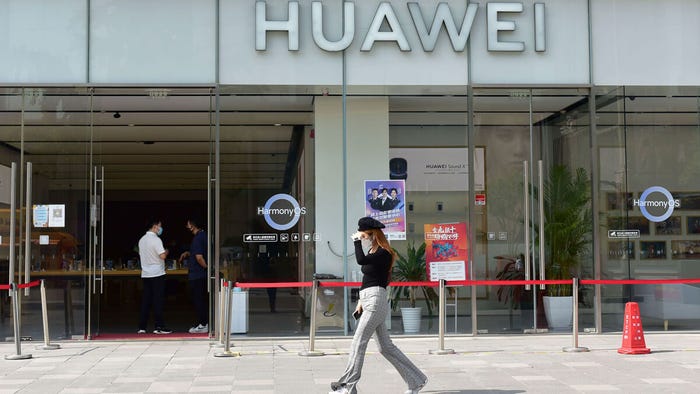Ericsson clears SMO screen on AT&T's 'strict' open RAN
AT&T's demand for an open interface between the management software and the radio access network now looks partly to blame for its heavy reliance on one vendor.

AT&T, Ericsson reports, has a watchful eye on its Swedish supplier's conformity with the open radio access network (RAN) manual, like a strict piano teacher or tennis coach hyperalert to a student's idiosyncrasies. As the US operator strives to build a fully open RAN-compliant network, it apparently has no tolerance for the technological version of oddly splayed fingers or a double-handed slice: the proprietary interfaces that have stopped telcos from combining Ericsson with other vendors at the same mobile site.
The first task for Ericsson, then, would have been to convince AT&T it is capable of adapting. "Our intention is to be open from the beginning. That is our challenge," said Anders Vestergren, Ericsson's head of SA network management. "We have a history in the industry and maybe as a company of not being completely open, and so it doesn't come easily."
The $14 billion RAN contract Ericsson signed with AT&T last year is a curiosity – supposed proof of Ericsson's commitment to openness and yet also the biggest deal in its history. Open RAN was conceived to aid the rollout of multivendor networks, comprising parts from numerous suppliers. But AT&T will have more Ericsson in its open RAN than it ever did in its traditional one.
This means the deal is defensible only if every product supplied by Ericsson could theoretically be swapped for another vendor. And to make that possible, every interface must cleave to specifications drawn up by the O-RAN Alliance, the group AT&T and several other telcos founded in 2018. "They are very strict that all new things must be O1-compliant," said Vestergren on AT&T's demands regarding a crucial interface.
Automation nightmare
Vestergren's interest, as his job title implies, is mainly in the field of management software. In the world of proprietary interfaces, this is generally known as the element management system (EMS) and is packaged with and inseparable from the RAN. With open RAN, the EMS gives way to a service and management orchestration (SMO) platform. Through the O1 interface, a telco should be able to pair an SMO platform from one vendor with baseband software from another.
As finicky as it is about O1, however, AT&T is using no one else but Ericsson for SMO technology and baseband software. And regardless of O1's usefulness, the SMO situation seems unlikely to change. "One of the ideas of AT&T is that it should be one management software – only one – and that should manage the whole network because that brings significant savings," said Vestergren. "If you had two here, investing in automation would be exactly twice as expensive and it would be a nightmare."
There is, perhaps, a bigger opportunity for other baseband software developers to play in AT&T's network. None, however, has been announced, and AT&T's radio units (RUs) will be "mostly Ericsson, too," said Vestergren, meaning a second baseband software vendor would effectively be the meat between the bread slices of Ericsson's SMO platform and Ericsson's RUs. Nor would open fronthaul 7.2x, the O-RAN Alliance spec for linking baseband software and RUs, allow AT&T to rustle up an instant sandwich with these parts. That integration still requires considerable effort, according to experts.
Outside AT&T, the problem with the O1 interface between the SMO platform and the RAN is that most deployed networks are not compliant with these O-RAN Alliance specs. A workaround proposed by Ericsson involves linking its SMO platform to another vendor's EMS via an interface called OSSii, which predates the O-RAN Alliance by several years. Imperfect as this sounds, it would allow Ericsson to provide some automated support for third-party RAN products in a telco network, according to Vestergren.
AT&T is avoiding any such compromise on its open RAN principles through its ejection of Nokia, the Finnish vendor previously active at a third of AT&T's mobile sites. It is this removal, however, that leaves AT&T with just one supplier of baseband technology, as well as that single layer of management software. RUs from Fujitsu, the only other named RU vendor, will be powered by Ericsson's baseband software, Vestergren confirmed.
A bad rApp?
No doubt, the main opportunity for other vendors is in the network apps that part of Ericsson's SMO is designed to support. This RAN Intelligent Controller (RIC) – simply branded the Ericsson Intelligent Controller (EIC) by the Swedish vendor – relies on R1, yet another O-RAN Alliance interface, to host third-party apps for network management, besides Ericsson's own range of apps. Thanks to that OSSii workaround, Ericsson believes it can also use R1 to run apps on a third-party RAN with an old-fashioned EMS.
When Light Reading spoke with Vestergren last month, Ericsson could boast more than 20 app partners, including HCL Software, Infovista, Viavi and Wipro. Anyone that meets basic criteria to do with things like payment of taxes is included in the "directory," as Ericsson describes it. "We have said we are open from the beginning, and to be open you cannot judge, because if you start judging you are not open," said Vestergren. Once in the directory, partners gain access to Ericsson's software development kit.
Could an app developed for EIC be moved to a competitor's RIC without changes? While each RIC probably demands some additional effort on testing and verification, various developers say they have not had to alter the code when taking their apps to other RICs, according to Vestergren. That all sounds positive.
Vestergren also rejects the analogy some draw with the market for smartphone apps, home to just a couple of dominant stores. The power of Apple is that it can provide access to a vast developer community and charge for the privilege, he points out. There is no parallel in network apps, where a matchmaker would sit between just a couple of hundred app vendors and a similar number of telcos.
Nevertheless, the Ericsson man doubts there will be dozens of RICs. "I think there will be fairly few because the investment cost to do a good RIC is pretty substantial," Vestergren said. He also thinks "very few" operators will buy EIC as a standalone product, rather than fully integrated with Ericsson's SMO platform.
The typical customer, in Vestergren's view, would be at least partly reliant on Ericsson's RAN technology and want to avoid combining different management software and RIC vendors across the whole footprint. "These integrations are expensive, so either you pay for this integration, or you pay for that integration, but you don't want to pay for all of that because then it is going to be more expensive," he said. The implication is that standalone RIC vendors may struggle.
AT&T clearly is taking the whole SMO and RIC package from Ericsson, and the potential concern here is the flavor of that RIC technology. EIC is a so-called non-real time RIC. Apps for this are dubbed "rApps" in the industry and have a response time of more than a second. The alternative is the near-real time RIC and its xApps, which could potentially cut that response time to just milliseconds. Ericsson, though, has no plans to support xApps. "The functionality of xApps is provided by the RAN itself," the company previously told Light Reading by email. "At this point, we don't see benefits of xApps on top of what our RAN is doing."
From Vestergren's perspective, xApps might not even have any advantage over rApps. "When I test this in the lab, I get almost the same performance out of rApps and expect that with some more tuning I will be at xApp performance," he said. Critics have a different take on Ericsson's apparent aversion: Operators, they say, could use xApps to boost performance instead of buying more expensive Ericsson radios. That reputation for "not being completely open" won't be easy to shake off.
About the Author(s)
You May Also Like














